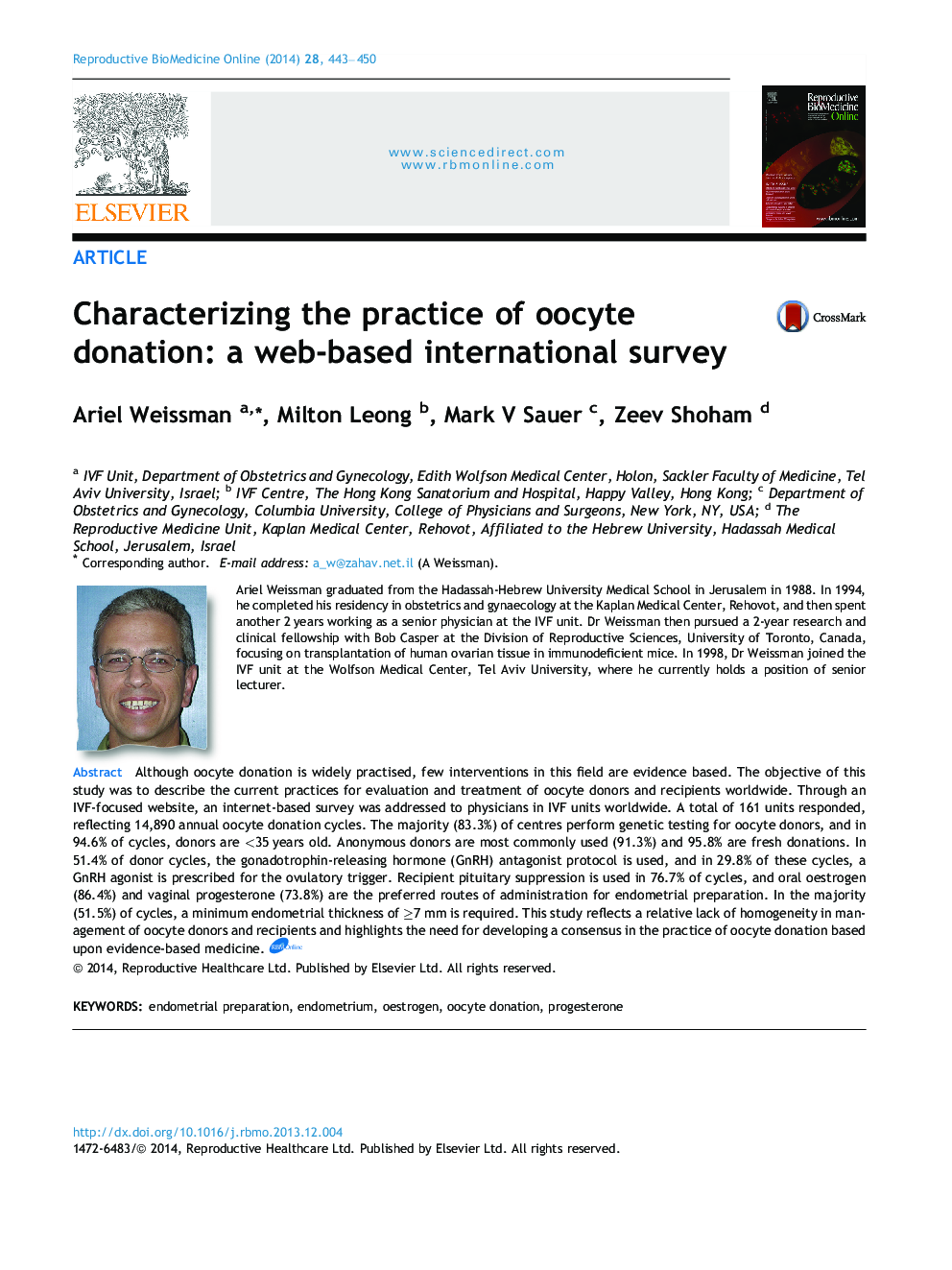| Article ID | Journal | Published Year | Pages | File Type |
|---|---|---|---|---|
| 3970197 | Reproductive BioMedicine Online | 2014 | 8 Pages |
Although oocyte donation is widely practised, few interventions in this field are evidence based. The objective of this study was to describe the current practices for evaluation and treatment of oocyte donors and recipients worldwide. Through an IVF-focused website, an internet-based survey was addressed to physicians in IVF units worldwide. A total of 161 units responded, reflecting 14,890 annual oocyte donation cycles. The majority (83.3%) of centres perform genetic testing for oocyte donors, and in 94.6% of cycles, donors are <35 years old. Anonymous donors are most commonly used (91.3%) and 95.8% are fresh donations. In 51.4% of donor cycles, the gonadotrophin-releasing hormone (GnRH) antagonist protocol is used, and in 29.8% of these cycles, a GnRH agonist is prescribed for the ovulatory trigger. Recipient pituitary suppression is used in 76.7% of cycles, and oral oestrogen (86.4%) and vaginal progesterone (73.8%) are the preferred routes of administration for endometrial preparation. In the majority (51.5%) of cycles, a minimum endometrial thickness of ⩾7 mm is required. This study reflects a relative lack of homogeneity in management of oocyte donors and recipients and highlights the need for developing a consensus in the practice of oocyte donation based upon evidence-based medicine.Although oocyte donation is widely practised, very few interventions in this field are evidence based. Our objective was to describe the current practices for evaluation and treatment of oocyte donors and recipients worldwide. Through an IVF-focused website, an internet-based survey was addressed to physicians in IVF units worldwide. A total of 161 units responded, reflecting 14,890 annual oocyte donation cycles worldwide. The majority (83.3%) of centres perform genetic testing for oocyte donors and in 94.6% of cycles donors are <35 years old. Anonymous donors are most commonly used (91.3%) and 95.8% of attempts are fresh donations. In 51.4% of donor cycles, gonadotrophin-releasing hormone (GnRH) antagonist protocol is used, and in 29.8% of these cycles, a GnRH agonist is prescribed for the ovulatory trigger. Recipient pituitary suppression is used in 76.7% of cycles, and oral oestrogen (86.4%) and vaginal progesterone (73.8%) are the preferred routes of administration for endometrial preparation. In the majority of cycles (51.5%), a minimal endometrial thickness of >7 mm is required. A relative lack of homogeneity in management of oocyte donors and recipients is well reflected in our survey, which highlights the need for developing through evidence-based medicine a consensus in the practice of oocyte donation.
